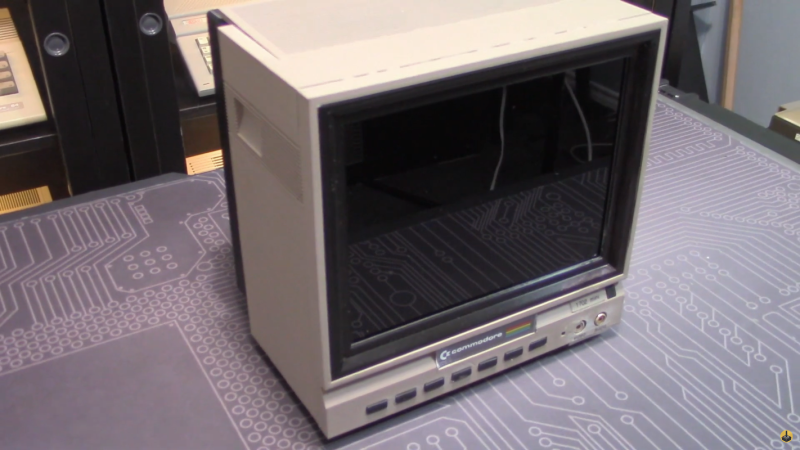While putting together a retro computer is a great project and can teach a lot about the inner workings of electronics, hooking that 70s- or 80s-era machine up to a modern 144 Hz 1440p display tends to be a little bit anticlimactic. To really recreate the true 8-bit experience it’s important to get a CRT display of some sort, but those are in short supply now as most are in a landfill somewhere now. [Tony] decided to create a hybrid solution of sorts by 3D printing his own Commodore replica monitor for that true nostalgia feel.
This build is a matching mini scale replica of the Commodore 1702 monitor, a color monitor produced by Commodore specifically for their machines. At the time it was top-of-the-line and even included an early predecessor of the S-Video method of video signalling. This monitor was modeled in Fusion 360 and then sent to the 3D printer for assembly, then populated with a screen with a period-correct 4:3 aspect ratio, required electronics for handling the Commodore’s video signal, and even includes an upgrade over the original monitor: stereo speakers instead of the single-channel speaker that was featured in the 80s.
While this monitor doesn’t use a CRT, it’s an impressive replica nonetheless, right down to the Commodore serial number sticker on the back. If you need a Commodore 64 to go along with it, there are plenty of possibilities available to consider like this emulated C64 on a Raspberry Pi or these refurbished OEM Commodores.
















I love this!
Thanks Bob! We really enjoyed making it.
“…a CRT display of some sort, but those are in short supply now as most are in a landfill somewhere now. ” while probably true, it’s unfortunate because of the lead in the glass. Perhaps many Hackaday readers know this, but most people I’ve met who complained about having to pay for disposal and/or bringing to a recycling center don’t realize that it is the glass rather than the circuitry which makes CRTs hazardous waste. It also seems unfair that, at least in the US, many religious buildings with stained glass were prohibited from replacing the brilliant colors of real leaded glass, while simultaneously the TV and monitor industry was putting out tons of leaded glass for nearly every home and office. ; ( Also because there wasn’t good public education, people were smashing their CRTs to bits in order to hide the remains in ordinary trash and avoid the fees.
For me the charm of the CRT monitor was the hex pattern of separate red green and blue pixels and the phosphor persistence.
This was most notable on arcade game CRTs
It wasn’t a thing though for home computers due to the lower resolutions.
This project really looks the part.
Also about the hinged control button cover, it’s not surprising the hinges broke. The very same thing happened with the originals.
regarding the hinges… I can’t tell you how many time I’ve tried to print a replacement door for my 1702 just to have the little clips break when I snap it in. I even tried a carbon fiber PLA for added strength with the same result.
If anyone has figured out how to make this work, please let me know!
Have you tried printing it vertically with tree support? It might need an unusually tall printer, though.
CF reinforcing only helps along the extrude path, not perpendicular to it.
BTW: Thanks Rob ! I spent a lot of time trying to lock down all the little details. It’s not a 100% match, but man is it close… and the image quality is great!
Thanks for the information! So that’s why the SNES looked so badly when connected to my 1702 via Chroma/Luma!
To be fair, picture quality via Composite/CVBS was okay. As if it had a comb filter sorta.
I used this monitor many years for my old Nintendo by the way, which usually was better resolution wise than ancient C64. :)